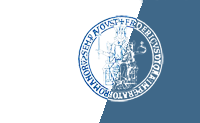Mazio, Claudia (2017) DEVELOPMENT OF VASCULARIZED PATHOLOGICAL AND PHYSIOLOGICAL ENGINEERED TISSUES. [Tesi di dottorato]
Anteprima |
Testo
Mazio_Claudia_29.pdf Download (6MB) | Anteprima |
| Tipologia del documento: | Tesi di dottorato |
|---|---|
| Lingua: | English |
| Titolo: | DEVELOPMENT OF VASCULARIZED PATHOLOGICAL AND PHYSIOLOGICAL ENGINEERED TISSUES |
| Autori: | Autore Email Mazio, Claudia claudia.m4567@gmail.com |
| Data: | 10 Aprile 2017 |
| Numero di pagine: | 147 |
| Istituzione: | Università degli Studi di Napoli Federico II |
| Dipartimento: | Ingegneria Chimica, dei Materiali e della Produzione Industriale |
| Dottorato: | Ingegneria dei prodotti e dei processi industriali |
| Ciclo di dottorato: | 29 |
| Coordinatore del Corso di dottorato: | nome email Mensitieri, Giuseppe mensitie@unina.it |
| Tutor: | nome email Netti, Paolo Antonio [non definito] |
| Data: | 10 Aprile 2017 |
| Numero di pagine: | 147 |
| Parole chiave: | Tissue Engineering, Vascularization, Tissue microenvironment, Breast cancer model, Dermis model |
| Settori scientifico-disciplinari del MIUR: | Area 09 - Ingegneria industriale e dell'informazione > ING-IND/34 - Bioingegneria industriale |
| Depositato il: | 25 Apr 2017 18:07 |
| Ultima modifica: | 08 Mar 2018 14:15 |
| URI: | http://www.fedoa.unina.it/id/eprint/11797 |
| DOI: | 10.6093/UNINA/FEDOA/11797 |
Abstract
Vascularization is still a great challenge in Tissue Engineering. First this is important to avoid mass transfer limitation in engineered tissues but also for innovative in vivo and in vitro applications. A pre-vascularized tissue can accelerate the formation of functional anastomosis with host vasculature in vivo ensuring the sustenance of the implant, its integration and long term survival. In the same time, in vitro, it can be a suitable model in view of fundamental research about physiological and pathological angiogenesis and industrial applications like drugs screening. In this work, we analyse the formation of capillary like networks into pathological and physiological tissues obtained by bottom up approach and strengthened by an endogenous extracellular matrix (ECM). The introduction describes the fundamental role of vascularization in tissue engineering and the bottom up approach that we exploit in order to obtain stroma-rich tissues. Chapter 2 retraces interesting steps of the state of art regarding 3D engineered models of pathological and physiological conditions, specifically, analyzing human breast and skin tissues and underling the role of microenvironment in tissue functionality. Chapter 3 and 4 are dedicated to the description of our work with the aim to achieve and investigate the features of vascularized pathological and physiological engineered models suitable for pharmaceutical and clinical applications. Notably, chapter 3 describes the development of vascularized breast cancer micro-tissues which are able to recapitulate tumor vascular pro-angiogenic and stromal desmoplastic reaction, and heterogeneity in cluster migration during interstitial invasion. On the other hand, chapter 4 shows how healthy micro-tissues are assembled and cultured in order to obtain vascularized dermis/skin equivalents mirroring physiological angiogenesis. Both models are featured by the presence of an active and organized stroma which is part of an interactive microenvironment and able to receive, store and release physio-pathological stimuli. We speculate that the vascularized dermis/skin model could be useful for in vivo applications in order to repair and restore damaged tissues. Furthermore, both vascularized tumor and healthy tissues are suitable research models. Thus, allowing the study of tumor progression, physio-pathological angiogenesis and providing a platform for drug screening on multicomponent systems.
Downloads
Downloads per month over past year
Actions (login required)
 |
Modifica documento |




